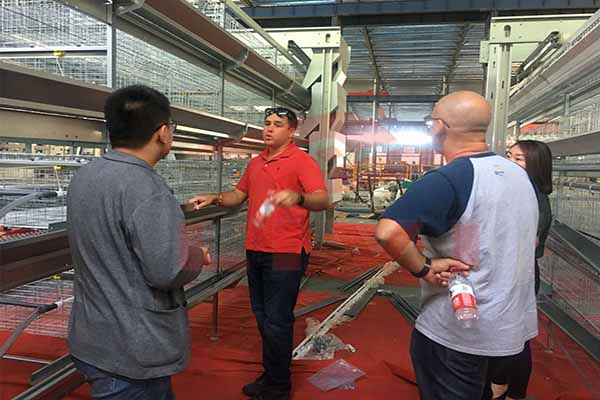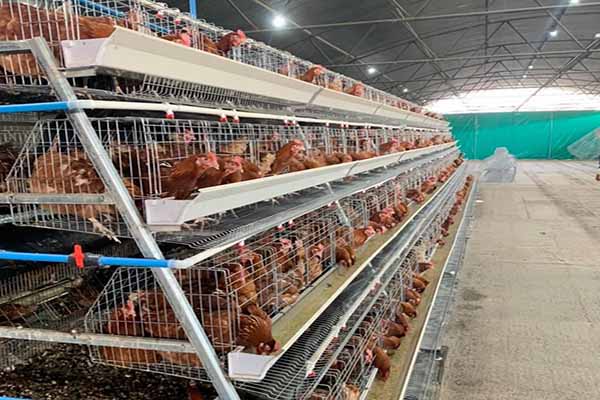How to Start a Cage-Free Chicken Farm: A Comprehensive Guide
Time : 2025-06-29
Starting a cage-free chicken farm is a rewarding venture that aligns with ethical farming practices and the growing demand for sustainable and humane livestock. This guide will provide you with a step-by-step process on how to embark on this farming journey, ensuring that you have all the necessary information to begin your cage-free chicken farming business.
Understanding Cage-Free Chicken Farming
Cage-free chicken farming refers to a method where chickens are allowed to roam freely, engaging in natural behaviors such as scratching, perching, and dust bathing. This approach to farming is more humane and has numerous environmental and health benefits, making it increasingly popular among consumers and producers alike.

Step 1: Conduct Market Research
BEGINNING WITH EXTENSIVE MARKET RESEARCH IS CRUCIAL TO ASSESS THE DEMAND FOR Cage-Free chicken products in your region. Understand the consumer preferences, price sensitivity, and local regulations that might affect your business model.
- Analyze Market Trends: Look at the trends in demand for cage-free chicken products in your target market.
- Identify Potential Customers: Determine who your primary customers will be, whether they are local processors, retailers, or directly to consumers.
- Study Local Regulations: Check local laws regarding animal welfare, food safety, and agricultural practices.
Step 2: Choose the Right Location
SELECTING THE PERFECT LOCATION IS KEY TO THE SUCCESS OF YOUR CAGE-FREE CHICKEN FARM. Consider the following factors:
- Climate: Choose a climate that is suitable for free-range chickens, avoiding extremes of heat and cold.
- Access to Feed and Water: Ensure there is easy access to high-quality feed and clean water for your chickens.
- Proximity to Markets: Position your farm near markets to reduce transportation costs and time.
- Zoning Regulations: Make sure your chosen location complies with local zoning and agricultural laws.
Step 3: Design the Chicken House and Outdoor Area
THE LAYOUT AND DESIGN OF YOUR CHICKEN HOUSE AND OUTDOOR AREA WILL AFFECT THE WELL-BEING OF YOUR CHICKENS AND THE EFFICIENCY OF YOUR FARM.
- Chicken House: Design a spacious house that provides shade, protection from predators, and proper ventilation. Include nesting boxes, roosting bars, and scratching areas.
- Outdoor Enclosure: Create a safe and secure outdoor space where chickens can range freely. The design should prevent injuries from sharp objects and ensure easy access to food and water.
- Professional Equipment: Invest in high-quality equipment such as automated feeders and waterers to minimize labor requirements and maintain hygiene.
Step 4: Select the Right Breed and Stocking Density
Density
THE CHOICE OF BREED AND STOCKING DENSITY WILL INFLUENCE THE PRODUCTIVITY, COSTS, AND OVERALL SUCCESS OF YOUR FARM.
- Breed Selection: Choose a breed that is well-suited to free-range conditions and has good disease resistance. Consider breeds that lay high-quality eggs or are good for meat production.
- Stocking Density: Determine the appropriate density for your farm, considering the size of the chickens, the available space, and the environmental factors of your region.
Step 5: Implement Biosecurity Measures
BIOSECURITY IS VITAL TO PROTECTING YOUR CHICKENS FROM DISEASES THAT CAN THREATEN THE WELL-BEING OF YOUR FLOCK AND THE EFFICIENCY OF YOUR FARM.
- Clean and Disinfect: Regularly clean and disinfect the chicken house and equipment to prevent the spread of diseases.
- Control Access: Limit access to your farm to reduce the risk of introducing diseases from outside sources.
- Health Monitoring: Establish a health monitoring program to detect and treat any diseases early.
Step 6: Create a Feeding Strategy
THE TYPE AND SOURCE OF FEED CAN HAVE A LARGE IMPACT ON THE HEALTH, PRODUCTIVITY, AND SUSTAINABILITY OF YOUR FARM.
- Feed Quality: Provide a balanced diet that meets the nutritional needs of your chickens at each stage of their life.
- Natural Ingredients: Use natural, non-GMO feed ingredients whenever possible.
- Waste Management: Implement a waste management system to handle feed waste efficiently and minimize environmental impact.
Step 7: Plan for Marketing and Distribution
DEVELOP A STRONG MARKETING STRATEGY TO PROMOTE YOUR Cage-Free chicken products AND ENSURE EFFICIENT DISTRIBUTION TO YOUR CUSTOMERS.
- Brand Identity: Create a brand identity that reflects your commitment to animal welfare and sustainable farming practices.
- Marketing Channels: Identify the most effective marketing channels for reaching your target audience, such as direct sales, local farmers markets, or partnerships with retailers.
- Distribution Strategy: Plan how you will distribute your products, considering factors like transportation costs and lead time.
Step 8: Stay Informed and Continuously Improve
CAGE-FREE CHICKEN FARMING IS AN EVER-EVOLVING FIELD. STAYING INFORMED AND WILLING TO MAKE ADJUSTMENTS IS ESSENTIAL FOR LONG-TERM SUCCESS.
- Keep Up with Research: Stay updated on the latest research in animal welfare, nutrition, and sustainable farming practices.
- Networking: Build relationships with other cage-free chicken farmers, agricultural organizations, and industry experts.
- Monitor Performance: Regularly monitor the performance of your farm and make improvements based on data and feedback.
Conclusion
Starting a cage-free chicken farm is a significant investment that requires careful planning and a deep commitment to ethical farming practices. By following this comprehensive guide, you can lay a solid foundation for your farm’s success. Remember that ongoing learning and adaptability are key to thriving in the cage-free chicken farming industry.
your farm’s success. Remember that ongoing learning and adaptability are key to thriving in the cage-free chicken farming industry.
Stay Informed:











